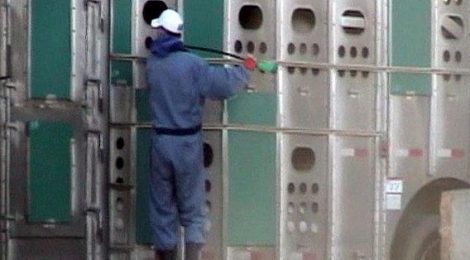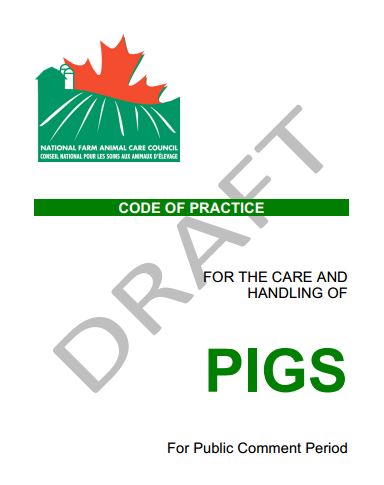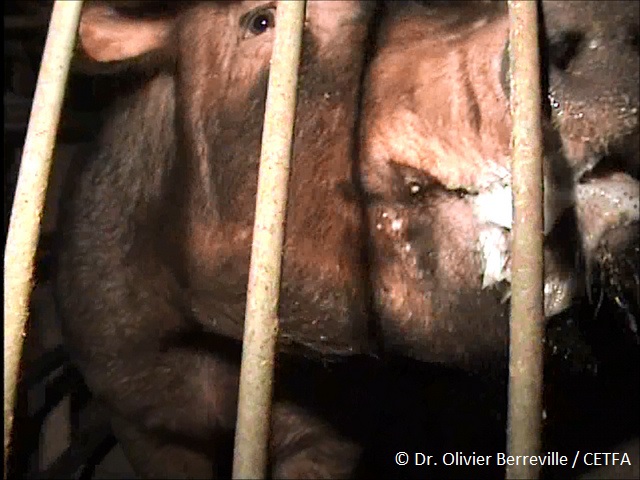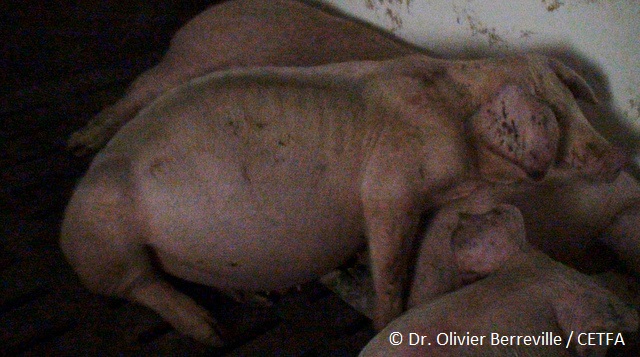
Concerns with the revised Code of Practice for the Care and Handling of Pigs
Canada’s Code of Practice for the Care and Handling of Pigs has been updated and released for public consultation (comments can be submitted until August 3, 2013 here).
Background:
 The revised codes were developed by a 17-member committee representing pig producers, transporters, processors, government, academia, and one representative from the Canadian Federation of Humane Societies. They were overseen by the National Farm Animal Care Council (NFACC), an organization driven by the animal agriculture industry.
The revised codes were developed by a 17-member committee representing pig producers, transporters, processors, government, academia, and one representative from the Canadian Federation of Humane Societies. They were overseen by the National Farm Animal Care Council (NFACC), an organization driven by the animal agriculture industry.
Although in most provinces the codes are voluntary, according to Anna Pippus (lawyer and Director of Legal Advocacy for Mercy For Animals Canada), they have the potential to set the legal standard.
As with the previous version, the new draft code differentiates between requirements and recommendations. Requirements are described as “industry-imposed expectations for responsible farm animal care and welfare” and therefore carry more weight, however, they continue to be voluntary.
Main concerns with the revised Code:
GESTATION CRATES
Science indicates sows in stalls show an increased incidence of stress behaviours such as bar-biting, sham-chewing and excessive drinking.
The revised code stipulates that, as of July 1, 2024, sows must be housed in groups. For all newly built or rebuilt barns after July 1, 2014, sows must be housed in groups. Stalls may be used for up to 35 days post-insemination. The stalls must allow the sows to stand up and lie down without simultaneously touching both sides or ends of the stall.
Given that the code recognizes numerous stress responses in sows in gestation crates; that all eight of Canada’s leading retailers have committed to phasing out use of the crates by 2022; and that Maple Leaf has committed to a phase out by 2017, the chosen date of 2024 seems arbitrary and unreasonably distant (see also CETFA’s blog post Sow stall phase-out: is 2022 good enough?)
Further, the current codes (drafted and released in 1993) indicate that sows in stalls must not touch both sides of the crates, yet this has never been enforced.
MUTILATIONS
The code requires that castration performed on piglets over 14 days of age must be done with anesthetic and analgesic, and that as of July 1, 2019, castration performed at any age must be done with analgesics.
Castration is completely unnecessary and has in fact been banned by the EU (effective 2018; earlier in certain countries).
Additionally, the use of analgesics during other painful procedures such as ear tattooing, notching or punching is only recommended by the code, not required.
Tail-docking continues to be allowed, only requiring analgesics if performed on piglets over 7 days of age. The Netherlands has voluntary phased out the practice.
The need to clip piglets’ teeth “must be evaluated,” but is not forbidden.
EUTHANASIA
The code does require that large pigs be shot a second time when penetrating captive bolt is used. However, the code lists a number of ineffective forms of euthanasia as conditionally acceptable. These include the use of electrocution, and CO2 chambers.
One of the criteria listed to guide decisions on when to euthanize an animal is productivity. Productivity should not be used as a basis for determining when a suffering animal should be euthanized.
BOARS
As of July 1, 2024, boars must be provided with sufficient space to stand, turn around, and lie comfortably in a natural position.
The Code reflects federal transport regulations in requiring producers to transport boars individually rather than cutting their tusks, which the code recognizes, are innervated.
Producers can still use stalls to confine boars, and the proposed increment in stall size does not apply to breeding boar stud operations.
SICK PIGS
While the Code stipulates that every pig production facility must have the ability to segregate sick or injured pigs in a separate area, it only recommends that such areas provide an environment conducive to recovery, such as heat, bedding and easy access to fresh feed and water.
ON-FARM SURGERY
The draft code allows stockpersons to perform surgeries. Only qualified veterinarians able to dispense anesthetics should be allowed to perform such procedures.
Producers with sows suffering after difficult births are only recommended to seek veterinary advice for administration of antibiotics and/or analgesics.
In order to comply with federal non-ambulatory transport legislation, injured and ill animals should be treated promptly. However, the codes simply recommend that it be done.
ELECTRIC PROD USE
While the code requires that electric prods not be used as a primary driving device, it continues to allow their conditional use – a requirement that cannot be enforced.







